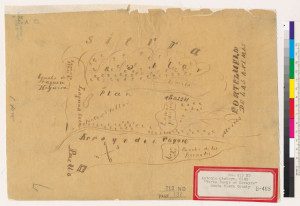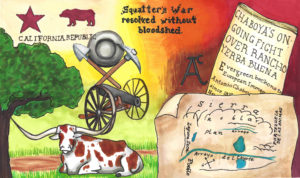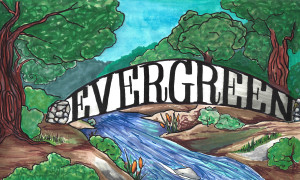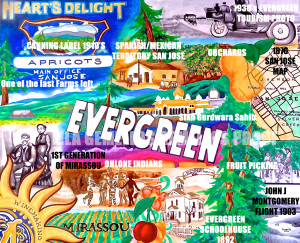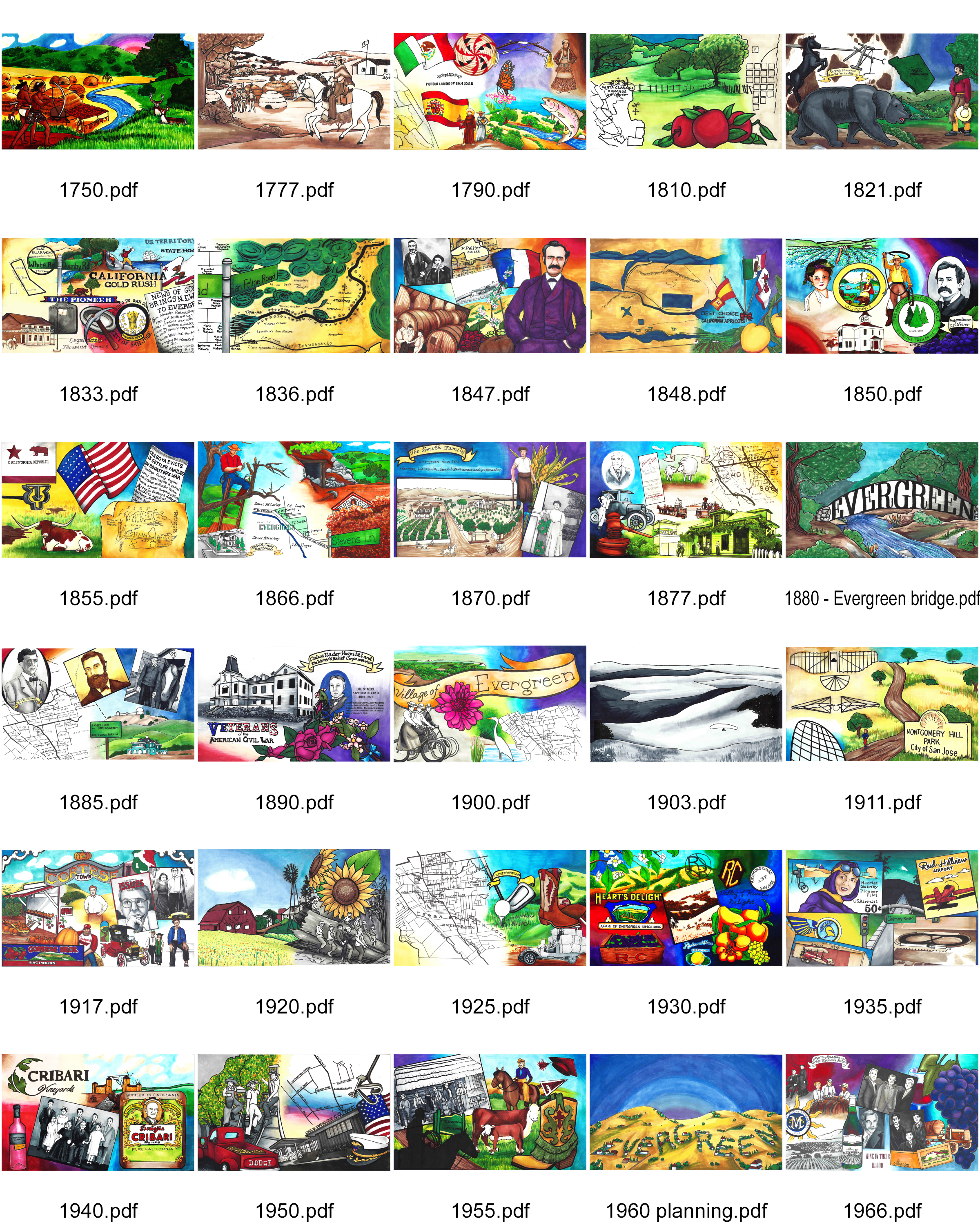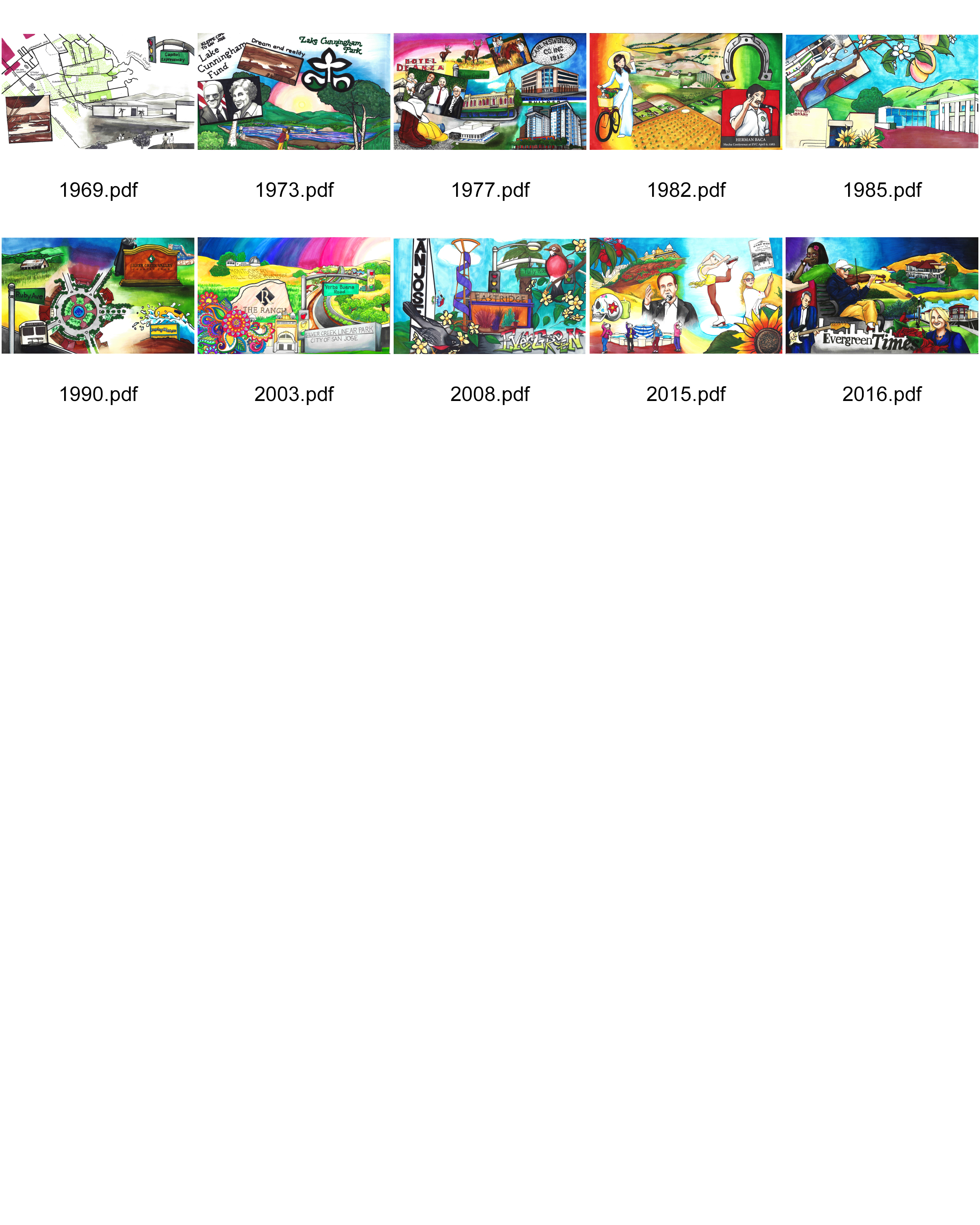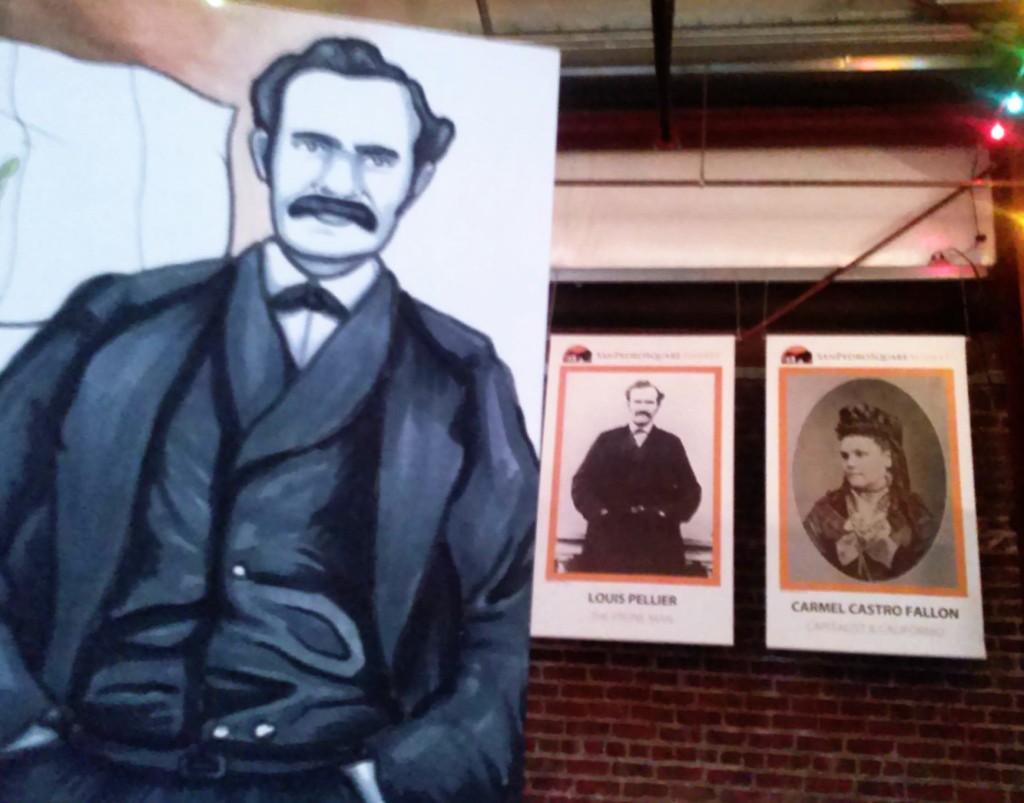 ARTWORK INSPIRED FROM RESEARCH
ARTWORK INSPIRED FROM RESEARCH
 The Evergreen Mural Walk will be an outdoor gallery beautifying the community of Evergreen. These murals are grounded in the history of the geographical location. I used research materials, interviews and family photos in the creation of this artwork. The community of Evergreen has grown up considerably over its 250+ year written history. I literally tried to build a beautiful timeline that captured the feeling of Evergreen. Literally speaking, Evergreen was the inspiration. Above is the photo timeline that I started the project with. I’ll try to make this the shortest History Lesson possible. For more about the research process Read this Article.
The Evergreen Mural Walk will be an outdoor gallery beautifying the community of Evergreen. These murals are grounded in the history of the geographical location. I used research materials, interviews and family photos in the creation of this artwork. The community of Evergreen has grown up considerably over its 250+ year written history. I literally tried to build a beautiful timeline that captured the feeling of Evergreen. Literally speaking, Evergreen was the inspiration. Above is the photo timeline that I started the project with. I’ll try to make this the shortest History Lesson possible. For more about the research process Read this Article.
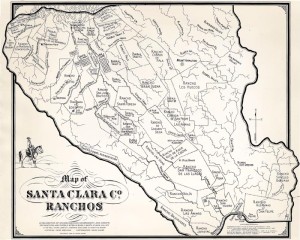 Because the artwork starts with the first records of area, our Evergreen history begins with the Native Americans and Spanish missionaries intersecting. Therefore, upfront in our mural walk we will be seeing untouched Olhone/Tamien wilderness, Spanish colonialists and Mexican grant owners. The first fruit of Evergreen orchards supported Spanish naval bases at Monterey and San Francisco presidio. Initially, it was considered with lands belonging to Mission San Juan Bautista.
Because the artwork starts with the first records of area, our Evergreen history begins with the Native Americans and Spanish missionaries intersecting. Therefore, upfront in our mural walk we will be seeing untouched Olhone/Tamien wilderness, Spanish colonialists and Mexican grant owners. The first fruit of Evergreen orchards supported Spanish naval bases at Monterey and San Francisco presidio. Initially, it was considered with lands belonging to Mission San Juan Bautista.
The Pueblo of San Jose was established in 1777, along with Mission de Santa Clara de Asis. Mission San Jose, in present day Fremont, wouldn’t open until 1797. In 1822, There will be latino and chicano motifs throughout the project as it is a constant through Evergreen’s timeline.
By the 1800’s, the Evergreen Valley was a rural village with orchards and cattle. One of the largest land grants in Santa Clara Valley and all of California was to Antonio Chaboya(Chabolla, Shobolo). Large herds of cattle covered green Evergreen hills with heavily populated pueblo tracts nearby. The Mexican Period would last from 1822-1848. We’ll be sharing plenty of historic property maps and city maps throughout the project. European settlers would homestead on the ranchos claiming the right to lands. The original grants were upheld, but funds were exhausted after their legal battles. Though they won in court, the squatters got what they asked for.
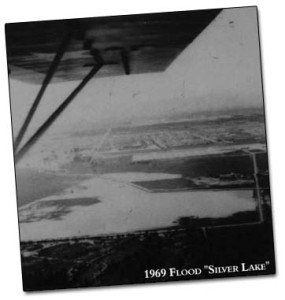 The Evergreen Valley was not only grasslands but also a wetland, the Lagunitas. The wetlands would gradually dries up as farmers used the natural water ways for irrigation. Laguna Secayre was prone to flooding the area, as it was fed by the Lagunas’ streams. In the 1880’s, Frank Cunningham purchased what was then known as Silver Lake. The natural lake provided water to ranchos and later orchards through the creeks and natural waterbeds of the wetlands. The City of San Jose purchased Cunningham’s lake in the 1920’s and stabilized the water system and flooding. The park didn’t open until the 1970’s. Some of those brooks and creeks still babble through the neighborhood today.
The Evergreen Valley was not only grasslands but also a wetland, the Lagunitas. The wetlands would gradually dries up as farmers used the natural water ways for irrigation. Laguna Secayre was prone to flooding the area, as it was fed by the Lagunas’ streams. In the 1880’s, Frank Cunningham purchased what was then known as Silver Lake. The natural lake provided water to ranchos and later orchards through the creeks and natural waterbeds of the wetlands. The City of San Jose purchased Cunningham’s lake in the 1920’s and stabilized the water system and flooding. The park didn’t open until the 1970’s. Some of those brooks and creeks still babble through the neighborhood today.
After the Mexican American War, US and European settlers came Westward and the Gold Rush proceeded in the following years. San Francisco flourished but needed to be fed, largely by Santa Clara County. James Lick Observatory began construction towards Mount Hamilton nearby in 1876.
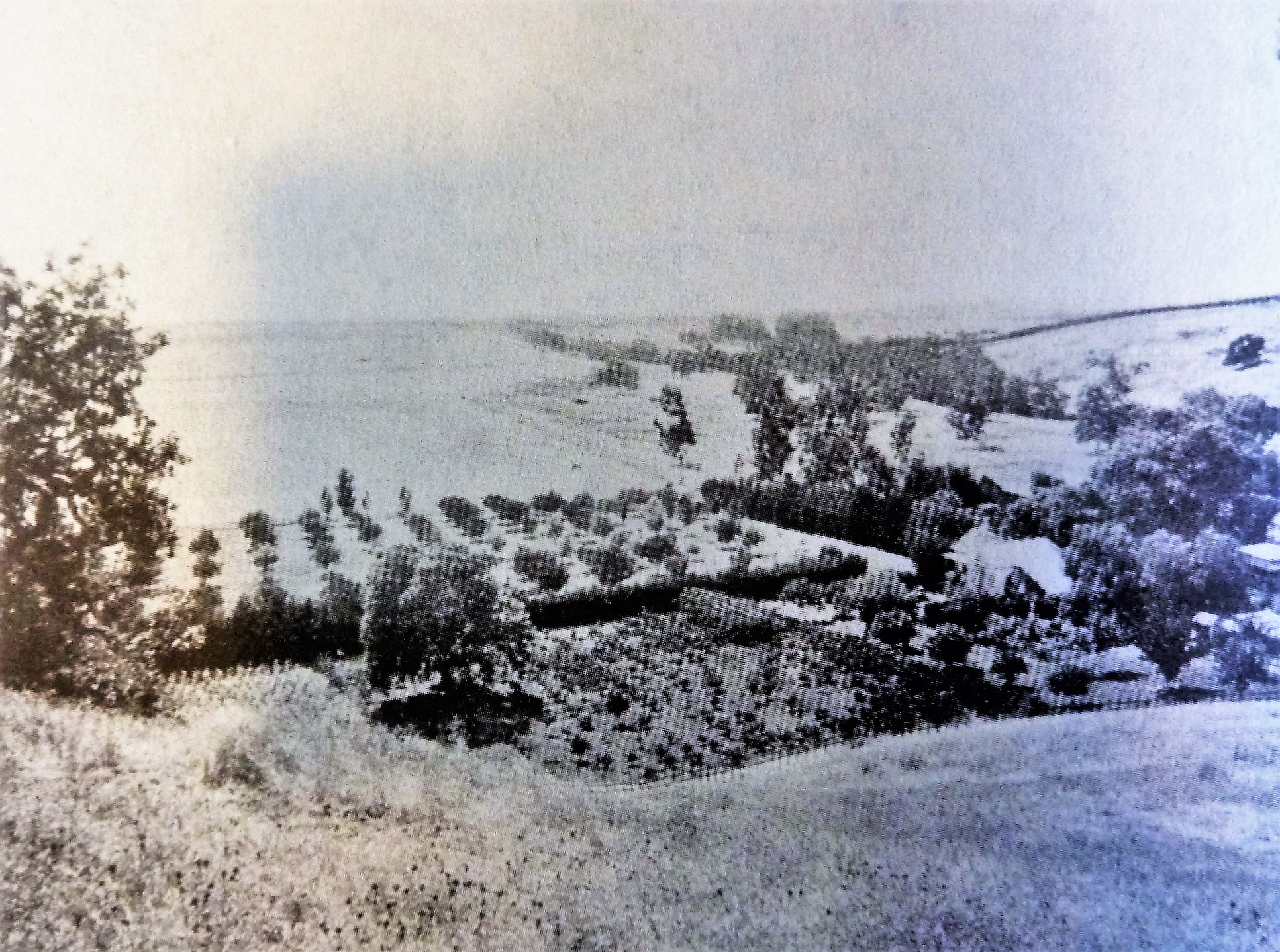 European immigrants found homesteads in the rich soil of Evergreen. Mirassou Wineries were created in 1854. My prominent Evergreen characters, and familiar street names, come about during this time. The Valley of Heart’s Delight captures Evergreen perfectly during this period. I’ll be using lots of fruit and canning labels in the mural series. There will be a redundancy of art deco / Victorian motifs in this artwork, celebrating our orchards and farming culture.
European immigrants found homesteads in the rich soil of Evergreen. Mirassou Wineries were created in 1854. My prominent Evergreen characters, and familiar street names, come about during this time. The Valley of Heart’s Delight captures Evergreen perfectly during this period. I’ll be using lots of fruit and canning labels in the mural series. There will be a redundancy of art deco / Victorian motifs in this artwork, celebrating our orchards and farming culture.
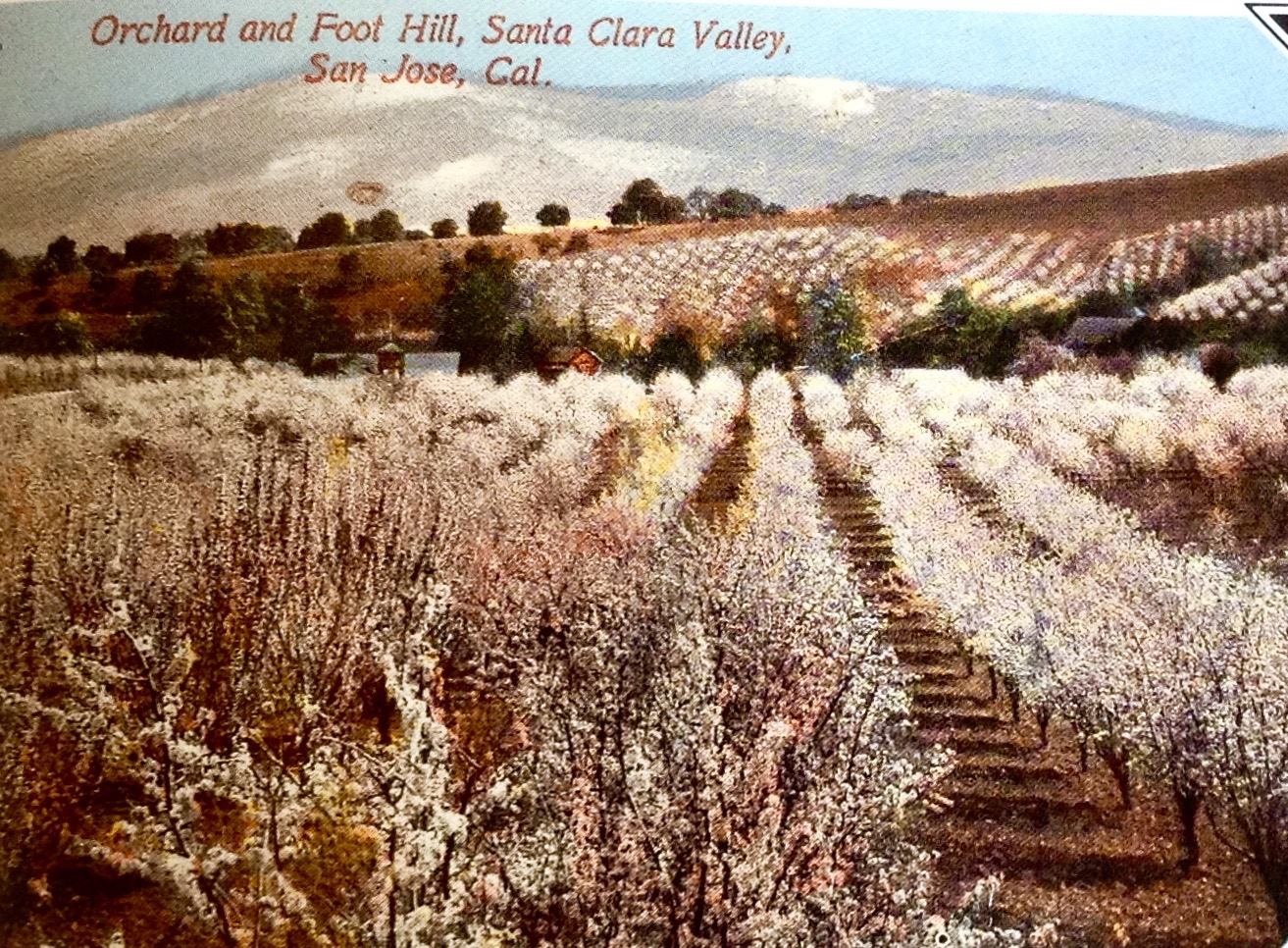 The Evergreen orchards finally stretched as far out as East San Jose and San Jose proper, then was incorporated into the city limits along with East San Jose in 1911. Notable farmers, families, contributors and citizens throughout time will be featured without redundancy. It’s important to me that we represent exemplary figures throughout Evergreen history and embrace the diversity still here today.
The Evergreen orchards finally stretched as far out as East San Jose and San Jose proper, then was incorporated into the city limits along with East San Jose in 1911. Notable farmers, families, contributors and citizens throughout time will be featured without redundancy. It’s important to me that we represent exemplary figures throughout Evergreen history and embrace the diversity still here today.

Perspectives of rolling hills and oak trees will repeat throughout the mural series. Our modern cultural hotspots will be represented in our diverse look of Evergreen. I am going to dip into the wealth of Evergreen culture and history throughout the mural series.
If you would like to contribute old family photos and stories to the Evergreen Mural Walk, please e-mail at info@evergreenmuralwalk.com
CONCEPT ARTWORK
Starting with an idea, I wanted to see how these historic Evergreen elements played together as a cohesive statement. To the left is the first mock-up. I really appreciated this but quickly realized this didn’t communicate as effectively as a one off. It needed conjugation and length.
The color, like Evergreen’s people, needs to be bright and bold. Once I proved to myself that the concepts worked together, I started designing them in chronological order. Here’s a shot of the collection in progress.
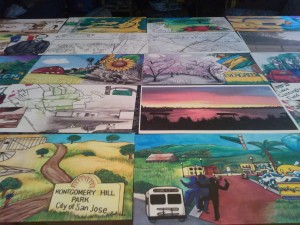 Redundancies will be created from orchards, canning labels and chicano motifs. There will be monochromatic panels along side bright elements, to honor our history and our future. Below is a condensed version of the already completed artwork.
Redundancies will be created from orchards, canning labels and chicano motifs. There will be monochromatic panels along side bright elements, to honor our history and our future. Below is a condensed version of the already completed artwork.
The overall statement of the piece is “Evergreen, we love you.”
